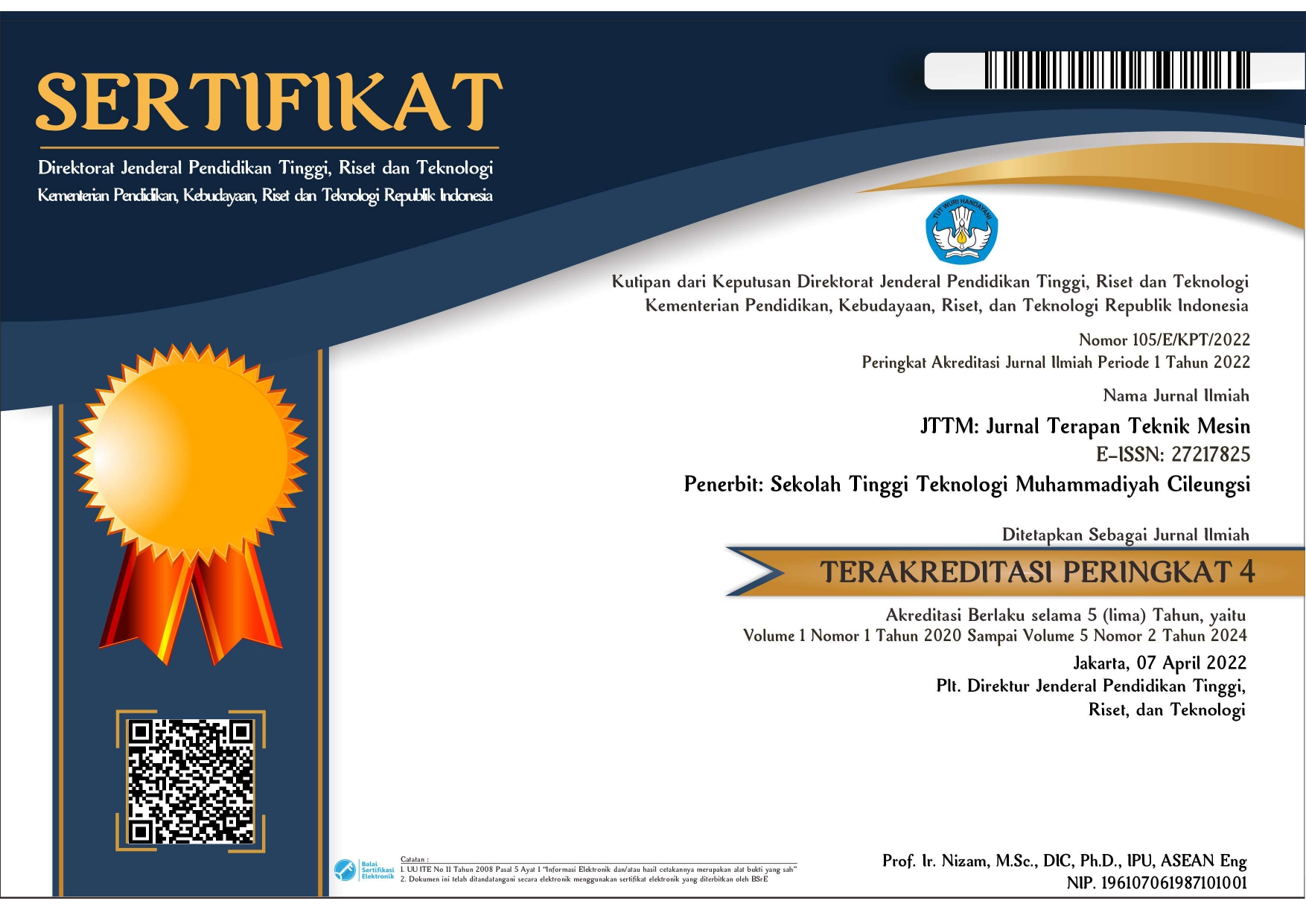Performance analysis of solar photovoltaic thermal (PV/T) dryer for drying moringa leaf
Abstract
Though its considerable solar energy potential prevents equal distribution throughout the region, Indonesia has not made the best use of it, particularly when it comes to integrated drying and electrical technologies. There are a number of drawbacks to traditional direct drying, particularly with regard to food goods. These include the possibility of contamination, discolouration, and animal disturbance. The purpose of this research is to develop, build, and evaluate an integrated drying technology—a solar photovoltaic thermal (PV/T) dryer—that can generate heat and electricity at the same time. The dried material used in this dryer is moringa leaves. This study employs an experimental design methodology, first developing and building a greenhouse-style PV/T dryer with three levels of shelves. Second, a test of the tool's functionality was conducted using 1000 grams of material on each shelf. Measuring devices such digital thermocouples, multimeters, solar power meters, and humidity meters are utilized to get test parameter data. The average daily solar intensity, according to the research findings, is 436.60 watts/m2. Shelf 1, which is next to the collector outlet, had the highest average temperature (53.9 °C), whereas shelf 3 had the lowest average temperature (37.1 °C). With an average voltage of 30.89 volts and an average current of 4.08 amperes, solar panels generate an average power of 85.65 watts. In the meantime, the material's mass decreased after drying for nine hours, on average by 72%, according to the drying data. With an average power of 86.65 watts, an average temperature on the third shelf between 37.1 °C and 40.6 °C, and an average mass reduction of 72%, it can also be stated that this PV/T dryer is quite successful for drying.
Copyright (c) 2024 Een Tonadi, Niharman, Besti Wiranto

This work is licensed under a Creative Commons Attribution-NonCommercial 4.0 International License.











